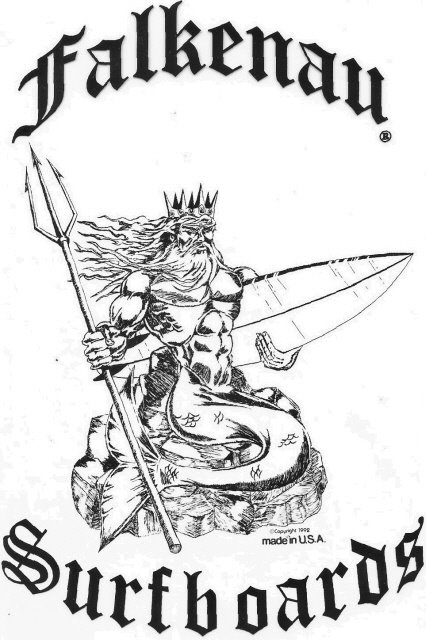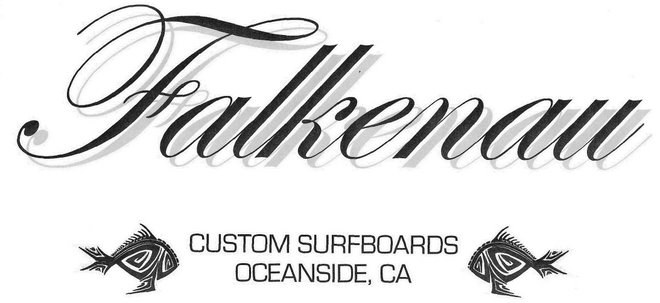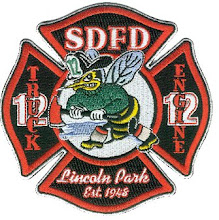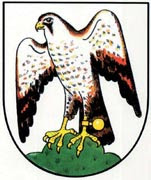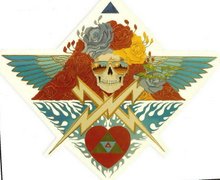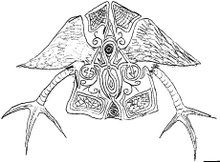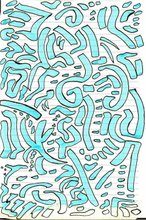


Skip Frye
| | Skip Frye Eagle |
Skip Frye describes his experience with Velzy's V-fin
It's hard to find a better surfer, shaper and test pilot than Skip Frye. Skip had this to say about the Velzy V-fin when noseriding.com caught up with him a couple of years back..
"The planeing was great, it just made the board plane so great. Absolutely great! Not too high and not too low, just right. And the board noserides perfect with this fin! And the turns, were like, whooop (radical hand motion), it just spun on a dime! It's fantastic (hand motion again), just whooop!
Frye said, "I hate to admit that I had this fin for nine years, just sitting in the shop after Velzy gave it to me. I rode it at Rincon when he first gave it to me, and it worked good. But I got side-tracked by life. Then one day recently, I put it on a board again. The board was good, but now the board was whoooaa, good!! I couldn't believe it. I had so much fun with the board, surfing it every day in all kinds of conditions. I surfed it for 30 straight days; and I never do that.
"I have over 30 boards, and I ride a different one almost every day. But Velzy's V-fin made the board so good I had to try it in every possible condition. I'm as high on it as anything I'm doing fin wise. I did a cutback that was one of the best I've ever done. I put it on one of my favorite egg boards, and two of my other boards, and they're the best they've ever ridden. I can't say enough good about this fin. Super noseriding, super turning, it's got it all." --Skip Frye
Historical Note
As surfing history shows, stupidity is to be expected. Skip said it took 10 years, just for the single fin to be accepted on a surfboard. Tom Wegener says he and his brother rode twin-fin boards 10 years in the South Bay before they ever caught on anywhere else. That was because someone won a contest in Hawaii on them. (Think how many contests could have been won before that.) Myself, I turned my nose up, at Velzy's V-fin, even after talking to good surfers I knew that had ridden them and loved them. Si, another arrogant Stupido! When I put one on my board I got the same "bam," right now, turns and noseriding to perfection, that Velzy promised. If you can surf, you'll kick yourself for not getting one sooner. I promise. -- Bob Howard.


Year Built:
Dimensions: 5'8
Shaper: Skip Frye
Manufacturer: Skip Frye
Location: California
Here's an old Skip Frye Fish which is collecting dust in a garage. Red bottom, clear top. His trademark hand drawn pencil logo is on the bottom as on all his boards. It has kind of a beaked nose.
Ink logos on top
You can see the fin patch and how straight the fins are. No toe in. No cant out. Real flat with a slight belly to vee. Rocker 3 1/2" nose and 1 3/8" tail
This one shows the rail. Kind of turned down, round and eggy all the way to the rear. Not much hard edge like contemporary boards.

Fish Fry Heats Up
by
Alex Wilson
Surfermag.com correspondent
Reno Abellira and Skip Frye inspecting Frye Fish during the 2003 Fish Fry. RK |
In this day and age of nearly shameless retro exploitation and imitation, the Fish Fry, a gathering of Fish fans set for May 1st at the North Jetty in Oceanside, Calif., would appear to be just another excuse for followers of the current trend to get together, cruise some fatter-than-average foam, and talk about how groovy their new psychedelically splashed ride really is. And it probably would be, were it in the hands of someone less responsible and less in touch with legitimate surf roots than the man at the helm, Sean Mattison.
A sales manager and top board expert for Surfride in Oceanside, Mattison sits on the shop’s floor surrounded by what he calls “The Fish Market,” a dazzling array of beautifully colored swallow-tailed glass. Once described by the legendary Michael Hynson as “the kind of guy who is on top of the pulse to the point where he might even be making it,” Mattison certainly has a sensitivity for surfing’s cutting edge, and without a doubt possesses the credentials and credibility necessary to soulfully pull off something like this.
From his cross-legged perch, he explains why “The Fry” will be more than just a congregation of trendy kooks. “We’re going to actually get the shapers together with some people who ride the boards and really appreciate them,” he says, “to sort of check things out and discuss design. I mean, the Fish is such a San Diego hallmark, I figured it would be rad to come together to share something that is both so old and so new. We want it to be like a hot-rod show. You’ll bring out your Fish, show it off, we’ll hang on the beach, and then we’ll put the boards out there on the test track to see who can do the fastest half-mile,” he says with a laugh. “It’s not for monetary purposes or anything like that. It’s grassroots, and it’s about having fun. We want nothing but a good vibe down there so we can show appreciation for the shape and bring attention to the guys who really know how to build them.”
And while gabbing with the likes of Fish shapers Rich Pavel and Mike Hynson, who both plan on attending, is certainly a draw, what may be most exciting about the event is the opportunity it affords the public to check out what exactly the equipment is capable of. Recent video and images of Mattison and his cadre of Oceanside “Fishermen” reveal absolutely stunning progressive surfing on a shape that is constantly evolving in step with the flow of the sport. A demonstration by the crew at the Fish Fry could serve to strengthen the legitimacy of the retro boom, and may also force some jaded critics to reevaluate their perceptions of the movement and its current contributions to surfing’s state of the art.
“Hopefully all the grumpy guys are off selling bait somewhere,” says Mattison lightheartedly. “This is more about bridging the gaps between old and new, and we’re just gonna have some fun.” Clearly not out to make a statement, the culturally in-tune beach BBQ that Mattison has proposed may do just that. An event that connects legitimate figures from the Fish world with fans of the shape, and offers a forum to showcase the equipment’s potential, may offer a touch of substance to a trend that many feel is drifting toward fashion rather than function.
| Skip Frye (September 7, 1941-) | |||
The famous Ron Stoner photo of a guy knee-paddling into perfect empty surf at Hailing from an adoptive home in San Diego, Harold Richard Frye came into surfing relatively late, almost missing what he considers to be "The Golden Age of the Sport." When his father went off to fight in World War II, the infant was the only male left in the house. "I was like the skipper of the ship," he says, "which is how I got my name." At Mission Bay High School, Frye was too small for most sports, but reveled in distance running. The endurance aspect would serve him well when surfing entered his life in 1958. A club known as The Kanakas ruled over Pacific Beach, welcoming Frye into the tribe. "Everyone says the '60s was the time, but I wish I'd been around a few years earlier," he laments, "so I could have experienced the balsa era. The purity of the sport was still unencumbered, and that was when they first got on the nose and started to turn." Competition was gathering momentum as surfing's popularity exploded during the early '60s, and it didn't take long for Frye, by then a member of the legendary Windansea Surf Club and team rider for Dewey Weber Surfboards, to navigate the ranks. His first big win came in the 1963 Aquaram event in Pacific Beach, where he defeated fellow Windansea teammate Butch Van Artsdalen in a surf-off. Frye retained his title the following year and reached a pinnacle in 1968, winning the U.S. Invitational at Oceanside. He also represented the United States in the World Contest in 1966 and 1968, narrowly missing the final on each occasion. The venue for 1968 was Puerto Rico, which instantly became his favorite surf destination, thanks to its warm, idyllic surf and Latino flavor. A photo of him from the trip appeared on the cover of the Sports Illustrated swimsuit issue, standing with his board behind a swimsuit model. Frye began shaping in 1963, at which time, he became enamored with the subtleties of fins. "I'm freaky on fins," he comments today. "They can make a regular board a good board." He was among the first to reduce fin size from the deadly early rudders as well as experiment with flex. He and other Californians felt their equipment -- as well as their surfing -- was progressing wonderfully, that is until they went to Australia. "We went to Oz in 1968 and watched 8mm films of As longboards vanished overnight, Frye went with the flow, working on egg shapes and later experimenting with the Fish. Aside from a stage he refers to as his "ghetto period" after his first wife left (he lived in his shaping room for a stint), he has maintained his zest for the sport. However, he was never more energized than during the longboard revival. "The biggest buzz I ever had in surfing was the early '90s when I went back to the big ones," he recalls. "I mean the 11-footers. The same thing happened to Duke [Kahanamoku] when Tom Blake reintroduced him to the 16-foot olos back in the '30s. I was riding through one break, through the channel and into the next break." Surfing from one spot to another is nothing new to Frye. He routinely surfs at least seven breaks in a session at the reefs along Sunset Cliffs. During the surf-drenched winter of 2000, he broke a personal record by riding 12 spots in a single go-out, a healthy feat for anyone, much less a great-grandfather. A rabid Laker fan and devout Christian, Frye spends every spare moment helping his wife Donna in her unending environmental mission and upcoming bid for city council. He treasures his extensive board collection and the stories each board tells. "I feel it's my duty to pass along the heritage of our sport," he says with a passion. "But there's still a long way to go, a lot of work to be done, especially with fins." -- Jason Borte, March 2001 | |||
| | |||
| | SKIP FRYE, Skip Overcoming the odds after a car accident crushed one of his knees, Skip was dedicated not to give up surfing but to become a surfing champion. And in 1963, two years after the accident he won the Pacific Beach, California Contest, and again in 1964. "Influenced by the great surfers of his time, Skip's style is smooth and flowing yet aggressive. It is fluid yet changing" | |||
But that first impression was wholly erased after we began talking about his sleek Skip Frye longboard.
| FRED GREAVES Harold Reid shows off his Skip Frye surfboard collection. The two attended middle school and high school together. |
There's a reason Reid is somewhat of an expert on the topic. Over the years, he's acquired (and still owns) 13 Skip Frye longboards.
Together, his quiver of Frye boards is like a novel, each one a chapter in the story of Reid's rebirth as a middle-aged surfer.
Reid began surfing 50 years ago in 1955.
He learned on a 14-foot redwood and balsa plank he shared with Bobby Hein, son of pioneer San Diego surfer William Frederick "Hadjie" Hein, now 86. Sharing boards was common back then, especially for 10-year-olds, because it took the strength of two kids to carry the 100-pound-plus boards to the beach. Reid and Skip Frye were classmates at Pacific Beach Middle School and Mission Bay High.
In 1962 Reid, Frye and a few dozen other hot-dogging San Diego-area surfers became charter members of the WindanSea Surf Club. Reid was aboard the infamous bus ride from La Jolla to Malibu, a drunken bacchanal in which the WindanSea crew established its reputation as hard-core surfers and party monkeys.
Reid eventually became an electrician and started his own contracting business, which he still runs today with 10 employees.
Between his raucous 30s and settle-down 40s, he drifted away from surfing. He was bogged down by unhealthy habits, including too much drinking. When he embraced sobriety in 1984, things began to change for the better.
Harold's wife of 32 years, Terri, was instrumental in getting him back in the water when she commissioned Frye to shape her spouse a new longboard. It served as a revitalizing tonic. In 1989, at the age of 44, Reid reclaimed his youthful passion for surfing.
"Since then, I've tried to surf every day," said Reid.
Each of his Frye surfboards is different. The largest is 12-foot-3 with a deep blue deck the color of the the ocean as viewed by astronauts in space.
Harold refers to it as "Big Mo" because it was shaped for him on Memorial Day. Big Mo is the board Reid prefers to surf in the summer, when the water is warm and the waves are small. Another board was given to him by Frye on his wedding anniversary. As for the one that hangs on the wall of his office, Reid won that one in a drawing.
Reid has never told Frye what dimensions he prefers for his longboards. He simply lets the master shaper produce whatever Frye thinks will work or be fun in the water.
"Skip takes care of it all," said Reid. "Once, he made me a square tail because he said everyone should have a square tail in his quiver."
Frye makes several different styles of surfboards, including his Model K. Fish-Simmons, Fryed Egg and Eagle.
"They are very comfortable boards," said Reid. "They go fast and they paddle really well. My 12-foot Eagle is the best ultra-longboard there is. It's the Cadillac."
Reid said he's careful not to exploit his friendship with Frye. He doesn't constantly pester his old friend to shape him a new board, especially these days. Frye is in the midst of a creative burst in which he's experimenting with different shorter boards called "fish." They're a unique short board style that is short and thick.
Reid has longboard blank waiting in the wings in the event that Frye gets a hankering to mow some heavy foam.
"If he wants to do it, he'll tell me to bring it over," said Reid. "I'm not going to bother him."
Out in the water, people notice the boards Reid rides because, even at age 60, he surfs aggressively and with confidence.
Reid said he tries to emulate Skip Frye's surfing style: long rides punctuated by graceful footwork back and forth along the deck.
"He's like the glide of the pelican. He's part of the wave and takes whatever the wave has to offer," said Reid.
Recently, he's become more active as a contest surfer. He competes in the 60-and-over "legends" category at club contests. His competition includes such masters as John Peck, L.J. Richard and Bobby Challenger.
An old friend, Dale Dobson, has been coaching Reid, helping him improve his style and try more daring maneuvers.
"I'd like to see if I could get a little better," said Reid, who is a grandfather.
He estimates that he surfs 320 days a year, mostly in the early morning hours at Cardiff Reef.
"You miss a day or two and you start to go crazy," he said.
<SKIP FRYE>
| GEPHART FISH FINS!!! |
If the droves of eagle-beaked 7-2 Sunset single-fins inching through chest-high Malibu are any indicator, we can conclude that staunch traditionalism has an on-again, off-again relationship with functionality. But when the two set aside their differences and decide to marry, only magic can happen. Marine-ply fins are a gorgeous example of this phenomenon. As the craftsmanship in producing a speed-oriented, structurally-sound wood fin flourishes, so too does the aesthetic beauty of the fin. What’s more, set against all the tinkerings of the last 50 years – from carbon-fiber to plastic – marine-ply Baltic Birch wood is a fine choice for fin material. Used widely for skateboards, it is the softest of the hardwoods, making it strong yet exceptionally light-weight and flexible. Most importantly, unlike a hunk of fiberglass and resin, a marine-ply fin floats. A positive buoyancy characteristic, combined with a negligible weight-factor, increases nose-to-tail balance, producing a noticeable a loss of drag. For your meddlings in the intersection of style and substance, True Ames now offers the handiwork of Larry Gephart, San Diego’s finman of mystery. Two templates, each one a double foiled traditional fisherman’s floating scrimshaw. |
| SKIP FRYE - NEW FLEX FINS |
Skip Frye confesses, "I'm freaky about fins." Captivated by the knee-based carves of Greenough, the San Diego surfer/shaper was among the first so-Cal heads to experiment with reduced fin areas and expecially flex. The Skip Frye Flex offers more area than the L-Flex, providing slightly better hold, but it has a less extreme rake than the Norm Flex, allowing for a smaller turning radius. This fin suits a variety of midlength eggs and can be a healthy experiment for the right longboard. |
Click to see a mint condition:
7'6" x 22.25" x 2.8125"3) Skip Frye EAGLE 10'7" - Teal
4) Skip Frye EAGLE 10'7" - Red





